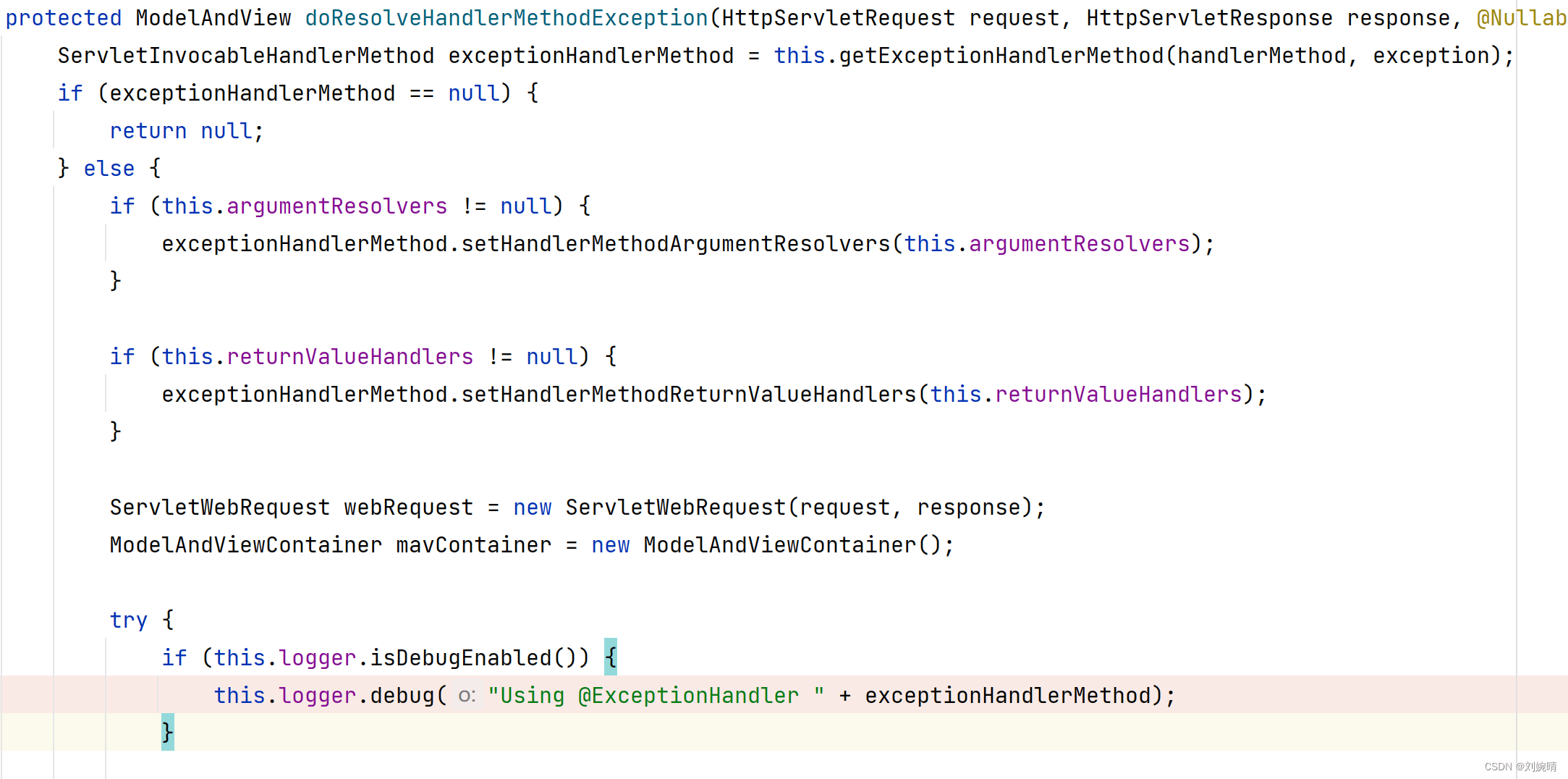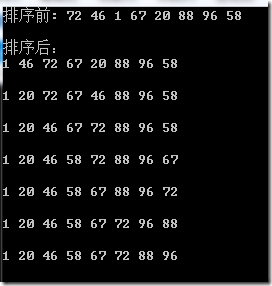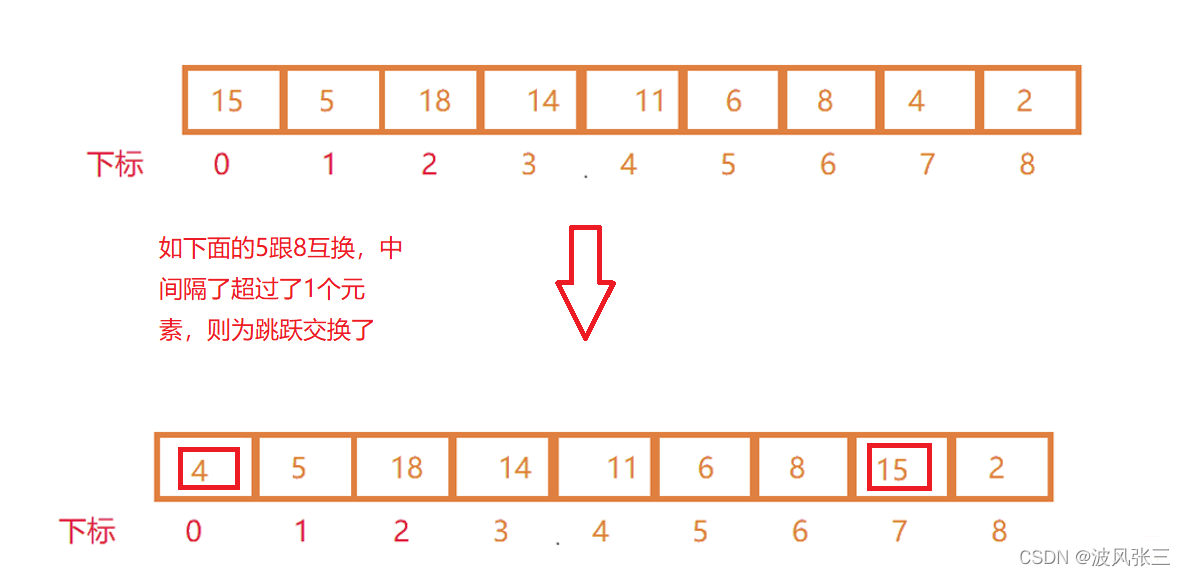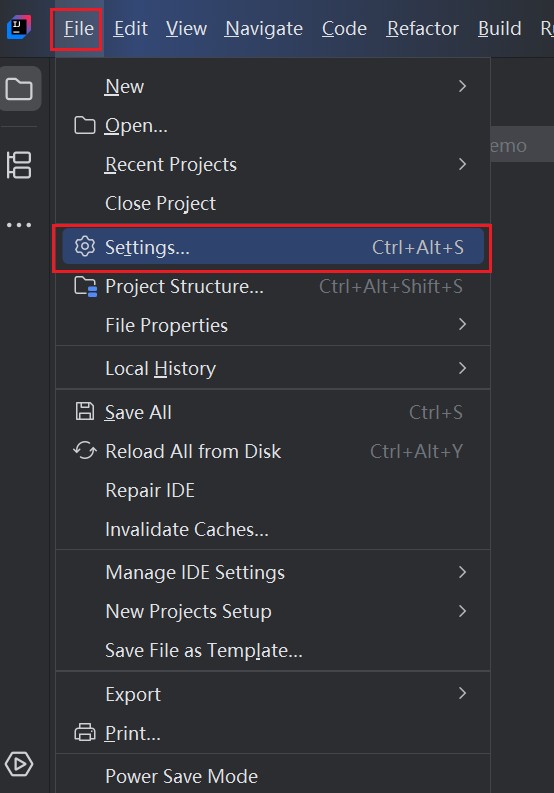在学习过程中观察到Arrays.sort(arr)算法可以直接进行排序,但不清楚底层的代码逻辑是什么样子,记得自己之前在面试题里面也有面试官问这个问题,只能说研究之后发现还是比较复杂的,并不是网上说的快排或者二分插入之类的。
首先看源码:
|
1 2 3 |
public static void sort(int[] a) { DualPivotQuicksort.sort(a, 0, a.length - 1, null, 0, 0); } |
它调用了DualPivotQuicksort的sort方法,乍一看以为是快排,这是很多网上的博主的说法,继续点开向下看(代码太长,没耐心看可以直接跳过该段代码QWQ):
|
1 2 3 4 5 6 7 8 9 10 11 12 13 14 15 16 17 18 19 20 21 22 23 24 25 26 27 28 29 30 31 32 33 34 35 36 37 38 39 40 41 42 43 44 45 46 47 48 49 50 51 52 53 54 55 56 57 58 59 60 61 62 63 64 65 66 67 68 69 70 71 72 73 74 75 76 77 78 79 80 81 82 83 84 85 86 87 88 89 90 91 |
static void sort(int[] a, int left, int right, int[] work, int workBase, int workLen) { // Use Quicksort on small arrays if (right - left < QUICKSORT_THRESHOLD) { sort(a, left, right, true); return; } /* * Index run[i] is the start of i-th run * (ascending or descending sequence). */ int[] run = new int[MAX_RUN_COUNT + 1]; int count = 0; run[0] = left; // Check if the array is nearly sorted for (int k = left; k < right; run[count] = k) { if (a[k] < a[k + 1]) { // ascending while (++k <= right && a[k - 1] <= a[k]); } else if (a[k] > a[k + 1]) { // descending while (++k <= right && a[k - 1] >= a[k]); for (int lo = run[count] - 1, hi = k; ++lo < --hi; ) { int t = a[lo]; a[lo] = a[hi]; a[hi] = t; } } else { // equal for (int m = MAX_RUN_LENGTH; ++k <= right && a[k - 1] == a[k]; ) { if (--m == 0) { sort(a, left, right, true); return; } } } /* * The array is not highly structured, * use Quicksort instead of merge sort. */ if (++count == MAX_RUN_COUNT) { sort(a, left, right, true); return; } } // Check special cases // Implementation note: variable "right" is increased by 1. if (run[count] == right++) { // The last run contains one element run[++count] = right; } else if (count == 1) { // The array is already sorted return; } // Determine alternation base for merge byte odd = 0; for (int n = 1; (n <<= 1) < count; odd ^= 1); // Use or create temporary array b for merging int[] b; // temp array; alternates with a int ao, bo; // array offsets from 'left' int blen = right - left; // space needed for b if (work == null || workLen < blen || workBase + blen > work.length) { work = new int[blen]; workBase = 0; } if (odd == 0) { System.arraycopy(a, left, work, workBase, blen); b = a; bo = 0; a = work; ao = workBase - left; } else { b = work; ao = 0; bo = workBase - left; } // Merging for (int last; count > 1; count = last) { for (int k = (last = 0) + 2; k <= count; k += 2) { int hi = run[k], mi = run[k - 1]; for (int i = run[k - 2], p = i, q = mi; i < hi; ++i) { if (q >= hi || p < mi && a[p + ao] <= a[q + ao]) { b[i + bo] = a[p++ + ao]; } else { b[i + bo] = a[q++ + ao]; } } run[++last] = hi; } if ((count & 1) != 0) { for (int i = right, lo = run[count - 1]; --i >= lo; b[i + bo] = a[i + ao] ); run[++last] = right; } int[] t = a; a = b; b = t; int o = ao; ao = bo; bo = o; } } |
代码很长,简要翻译过来,这里分了好几种情况:
1.数组长度小于286
这里又会调用一个sort方法,点开该sort(),又会划分情况:
数组长度小于47,
当leftmost(导入的一个布尔参数)为true,则使用直接插入排序;
否则会调用另一种插入办法,这里可以观察到一个注释:
/*
* Every element from adjoining part plays the role
* of sentinel, therefore this allows us to avoid the
* left range check on each iteration. Moreover, we use
* the more optimized algorithm, so called pair insertion
* sort, which is faster (in the context of Quicksort)
* than traditional implementation of insertion sort.
*/
大致意思是:相邻部分的每个元素都扮演着哨兵的角色,因此这允许我们避免在每次迭代中进行左范围检查。此外,我们使用了更优化的算法,即所谓的成对插入排序,它比插入排序的传统实现更快(在快速排序的上下文中)。
不过注意到,原函数参数传参在这里leftmost为true,所以一定是直接插入排序,以上作为了解。
数组长度大于47,采用一种快速排序的办法,这里因为代码太长,学艺不精,参考了一下https://www.jb51.net/article/236440.htm:
至于大过INSERTION_SORT_THRESHOLD(47)的,用一种快速排序的方法:
1.从数列中挑出五个元素,称为 “基准”(pivot);
2.重新排序数列,所有元素比基准值小的摆放在基准前面,所有元素比基准值大的摆在基准的后面(相同的数可以到任一边)。在这个分区退出之后,该基准就处于数列的中间位置。这个称为分区(partition)操作;
3.递归地(recursive)把小于基准值元素的子数列和大于基准值元素的子数列排序。
当数组长度大于286时
此时回到那段很长很长的代码段,在判断小于286的长度数组之后,从注解中:
// Check if the array is nearly sorted
这里是指检查数组元素是不是快要排列好了,或者书面一点说,是不是有一定结构了,然后看后面的for循环,注意到一段代码:
|
1 2 3 4 |
if (++count == MAX_RUN_COUNT) { sort(a, left, right, true); return; } |
这里的sort和我们上面在数组长度小于286时的那个sort方法是同一个方法,而针对这个count,是用来记录逆序组的,打个比方:
此时有一个数组为1 5 6 9 8 7 2 3
当数组认定我们的顺序应该为升序时,从第一个数开始数,此时9 8 7 2为降序,这就是逆序,将这四个数组合成一个组称为逆序组,然后再从3开始往后看。
当统计到一个逆序组时,count++,所以可以看出,count是用来记逆序组的,那么逆序组越多,这个结构就越混乱
MAX_RUN_COUNT == 67 ,因此当count一直加到67时,就说明已经在一个混乱的临界值了,此时执行sort()方法
通过这一段分析,我们理一下思路:
?如果数组能运行到这里,说明数组的长度大于等于286。符合该条件时,我们要判断这个数组是否有一定的结构:
(1)count<67,说明不是那么混乱,有一定结构,跳过;
(2)count>=67,说明已经混乱了,没有结构,执行sort方法,而已知数组长度大于等于286,那么必然大于47,一定执行快速排序。
跳过之后,经过代码的一大堆前置操作,最后看见下面的代码里面一行注释:
//Merging
显然,这里后面用到归并排序了,不详细赘述。
好了,最后总结:
- 数组长度小于286时,根据数组长度,分两种情况:
- 数组长度小于47,使用直接插入排序
- 数组长度大于47,使用快速排序
- 数组长度大于286时,根据数组排序情况,分两种情况:
- 数组内顺序较为混乱,即count逆序组数大于等于67,使用快速排序
- 数组内有一定顺序,即count逆序组数小于67,使用归并排序
参考资料:
《Java的Arrays.sort()方法到底用的什么排序算法》https://www.cnblogs.com/baichunyu/p/11935995.html作者:白春雨




